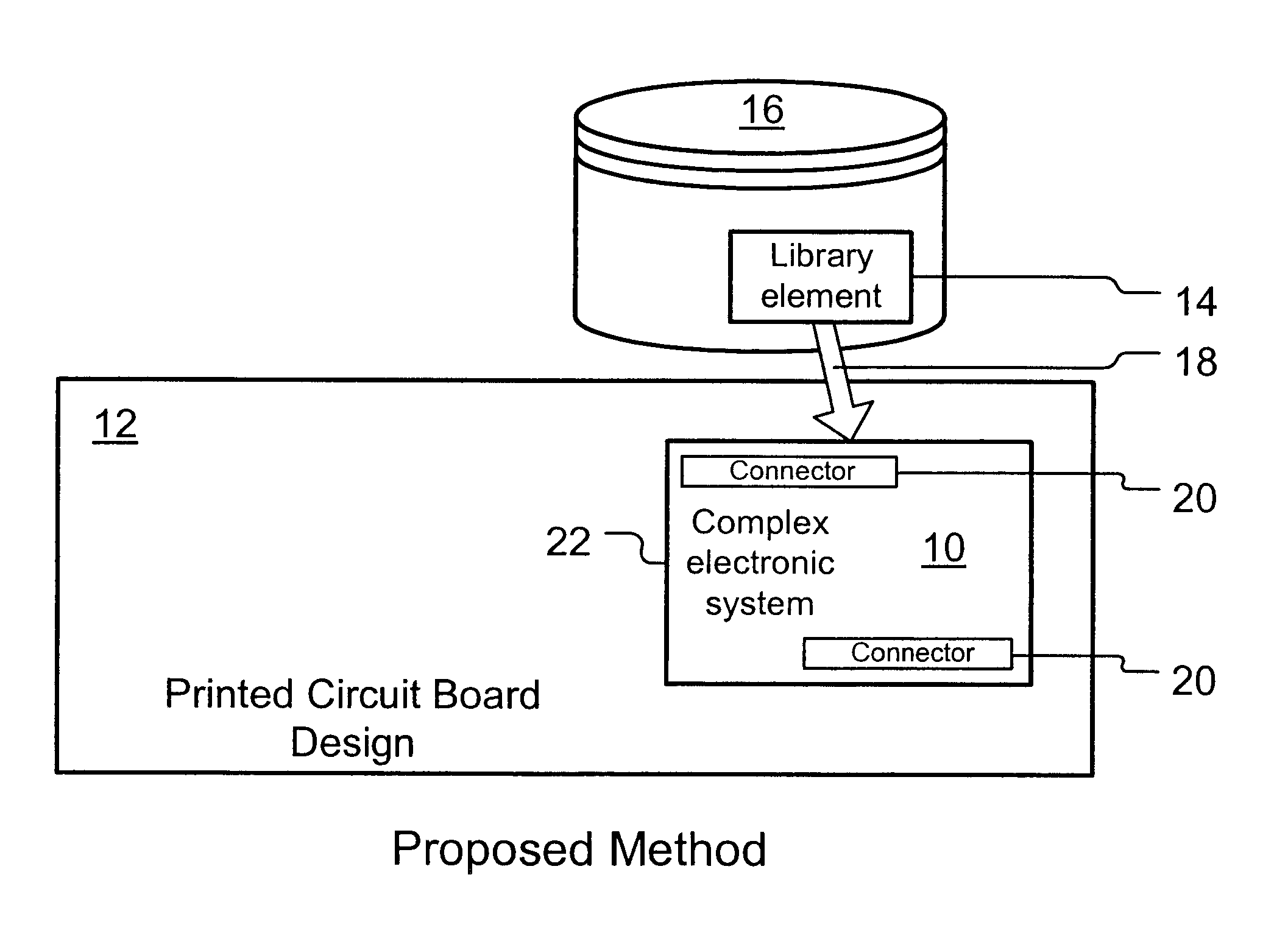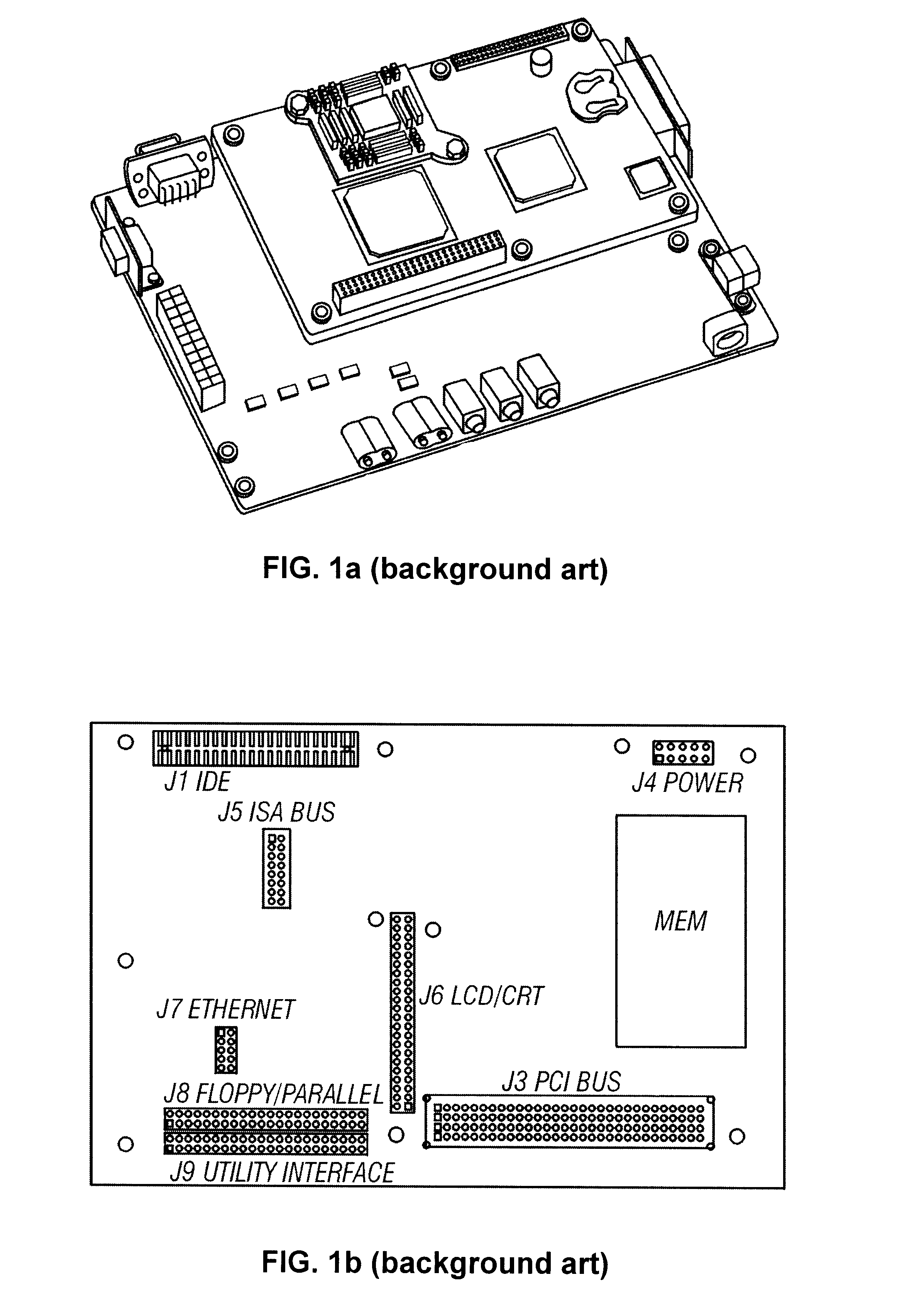PCB/complex electronic subsystem model
a technology of complex electronic subsystems and subsystems, applied in computing, instruments, electric digital data processing, etc., can solve the problems of time-consuming and repetitive existing processes, long and tedious processes, and opportunity for mistakes, and achieves easy adoption and use. , the effect of reducing the burden on software and hardware resources
- Summary
- Abstract
- Description
- Claims
- Application Information
AI Technical Summary
Benefits of technology
Problems solved by technology
Method used
Image
Examples
Embodiment Construction
A preferred embodiment of the present invention is library element model of a complex electronic system (CES) for use in a printed circuit board (PCB). As illustrated in the various drawings herein, and particularly in the views of FIGS. 3-4, preferred embodiments of the invention are depicted by the general reference characters 14, 100.
FIG. 3 is a block diagram depicting in a stylized manner how the present invention permits a complex electronic system (CES 10) to be designed into a PCB 12, i.e., a work piece in the greater design scheme here. The CES 10 is represented as a library element 14, which may reside in and thus only require access to a single library 16 by a design tool 18. The CES 10, the library 16, and the design tool 18 may be essentially conventional. The CES 10 attaches to the PCB 12 by a plurality of connectors 20 (including a plurality of pads, not shown). The CES 10 also exhibits a footprint 22 with respect to the PCB 12, which is simply rectangle here.
For purpo...
PUM
 Login to View More
Login to View More Abstract
Description
Claims
Application Information
 Login to View More
Login to View More - R&D
- Intellectual Property
- Life Sciences
- Materials
- Tech Scout
- Unparalleled Data Quality
- Higher Quality Content
- 60% Fewer Hallucinations
Browse by: Latest US Patents, China's latest patents, Technical Efficacy Thesaurus, Application Domain, Technology Topic, Popular Technical Reports.
© 2025 PatSnap. All rights reserved.Legal|Privacy policy|Modern Slavery Act Transparency Statement|Sitemap|About US| Contact US: help@patsnap.com



